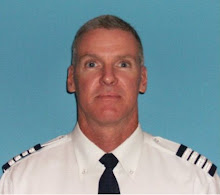Christmas In A Combat Zone
 Merry Christmas…and off to work we go. Not only is it Christmas, but it is also my first flight in a combat zone. Rising before the sun, we walk over to the flight line loaded down with personal Body Armour, weapons, ammunition, and a Survival/Overnight Bag.
Merry Christmas…and off to work we go. Not only is it Christmas, but it is also my first flight in a combat zone. Rising before the sun, we walk over to the flight line loaded down with personal Body Armour, weapons, ammunition, and a Survival/Overnight Bag.Upon arrival at base operations, we check the weather & airfield notifications (NOTAM’s), inventory flight gear and publications, obtain an intelligence briefing on our route of flight, preflight the aircraft, load cargo, perform cockpit checks and conduct a crew briefing. The “Alarm Red” siren interrupts our preflight routine. The siren is an indication of incoming indirect fire; i.e. mortars, rockets or RPG’s. When the “All Clear” is sounded (after an Air Force F-16 responded with a 500 lb hello), we crank the engines and launch on our 5-hour mission. We fly low, then climb above the clouds, descend through rain showers to skim along the desert for our
 tactical approach. We offload cargo in the pouring rain and joke about Christmas in Iraq. After a little gas, we depart on instruments...break into the clear and "hit the deck" enroute to our next destinations.
tactical approach. We offload cargo in the pouring rain and joke about Christmas in Iraq. After a little gas, we depart on instruments...break into the clear and "hit the deck" enroute to our next destinations.Back at base, we debrief and plan our route for tomorrow’s mission. Next stop is flight operations, where Air Mission Requests (AMR’s) are sorted and scheduled for the coming days. With the duty day complete, we stop off at the base chapel for an inspirational Christmas service. After a heart-felt chorus of “Silent Night”, we head to the dining facility and feast on prime rib, ham and chicken…while leaving room to make two passes through the dessert line. Walking home, I think of my girls, family and what an honor it is to serve with this unit. Tomorrow…we do it all again.












